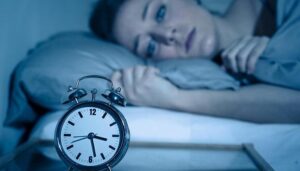 the term sleep disorder covers a wide range of conditions and symptoms, but sleep disorders can be broken down into various types.
the term sleep disorder covers a wide range of conditions and symptoms, but sleep disorders can be broken down into various types.
- Primary sleep disorders aren’t caused by another medical or psychological condition.
- Secondary sleep disorders are the result of another medical problem, such as depression, thyroid problems, stroke, arthritis, or asthma.
Types of primary sleep disorders
Primary disorders can be divided into parasomnias and dyssomnias.
- Parasomnia sleep disorders cause abnormal activities during sleep, such as sleep terrors or sleep walking.
- Dyssomnia sleep disorders cause trouble falling asleep or staying asleep. Perhaps the most well known dyssomnia is obstructive sleep apnea.
Other common dyssomnias are listed :
Abnormalities of the central nervous system
Problems with the central nervous system can trigger a sleep disorder. Central sleep apnea occurs when breathing temporarily stops for 10 seconds or more many times during a night’s sleep. This is caused by an abnormality in the brain, which prevents it from regulating oxygen levels and automatically triggering breathing. This diminished oxygen is a condition called hypoxia. It can worsen conditions such as epilepsy, or lead to problems such as chest pain or heart attack in people who have coronary artery disease. Central sleep apnea may also be caused by problems in carbon dioxide regulation.
Periodic limb movements in sleep (PLMS)
Periodic limb movements in sleep occur when the arms and legs move frequently and involuntarily during sleep. PLMS can cause the arms and legs to twitch, jerk, or flex. This can occur as often as several times per minute for up to several hours. The cause of PLMS is unknown, but experts think it is likely related to the nervous system. PLMS can play a part in insomnia. It can cause daytime sleepiness and fatigue because the symptoms interrupt sleep.
Restless legs syndrome (RLS)
Restless legs syndrome is a neurological disorder. It causes leg pain, a crawling feeling in the legs, or an urge to move the legs when you’re trying to go to sleep. The symptoms tend to occur when you sit or lie down. They are relieved by walking or moving the legs. The symptoms are worse at night. RLS may make it hard to fall asleep or stay asleep. It also causes excessive sleepiness during the daytime.
Insomnia
This sleep disorder can be acute, or short-term, or chronic, lasting weeks or months. It can be linked to an outside cause, such as stress, medicine, or a medical condition. When insomnia is the result of an outside cause, it is called secondary insomnia. Primary insomnia is not caused by outside events. It can be hard to identify the cause of primary insomnia.
Here is more information about some types of insomnia:
- Psycho-physiological insomnia occurs when someone under emotional stress becomes anxious, concentrates too intently on trying to sleep, and is unable to sleep because of the level of stress and anxiety.
- Paradoxical insomnia, formerly known as sleep-state misperception, is a sleep disorder characterized by a significant difference between the time a person thinks he or she has been asleep and how much time he or she has actually slept. People with this problem may complain that they can’t fall asleep and feel sleepy during the day because of lack of sleep, but they are actually sleeping and have no evidence of a sleep disorder.
Treatment
At Alimran Medical Center, we may recommend any of the following treatments
Neurons stimulation
Repetitive Transcranial Magnetic Stimulation, rTMS
Transcranial direct current stimulation (tDCS)
